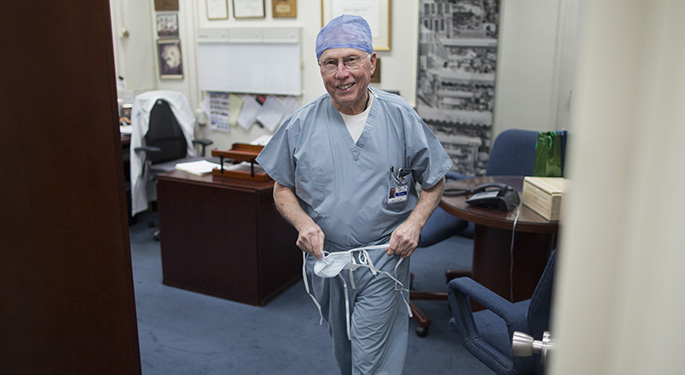
Hereditary Hemorrhagic Telangiectasia
If you have hereditary hemorrhagic telangiectasia (HHT), your blood vessels form abnormally, resulting in telangiectasias, which are abnormal small capillaries and veins on the surface of the skin or in the mouth or nose. As the name implies, HHT runs in families, caused by mutations in at least two specific genes. HHT is also known as Osler Weber Rendu syndrome.
Mount Sinai experts lead the way in treating HHT. The condition affects everyone differently, but there are some commonalities. Most people with the condition will have telangiectasias on their skin, in their mouths, and nose. You get frequent nosebleeds, especially as you get older. You may also have arteriovenous fistulae (AVF) or arteriovenous malformations (AVMs).
Vascular malformations occur when your arteries and veins do not connect the way we need them to for proper blood flow. They can occur anywhere, but if you have HHT, you are most likely to have vascular malformations in your lungs, liver, brain, and spine. AVMs or AVFs in the lung cause de-oxygenated blood that is on its way back to the heart to shunt into the pulmonary veins, reducing the oxygen level in the arteries that supply the rest of the body. This might cause you to feel tired or weak and to have less energy to exercise. Sometimes, your skin might have a bluish tint, especially in your lips, "clubbing" of the fingernails, and decreased blood oxygen levels. AVMs and AVFs can also cause a stroke or brain abscess. AVMs can also burst and cause bleeding into the surrounding tissue, usually in the brain or bowel. If you have an AVM in your liver, it often causes failure of the heart and the liver.
Diagnosis
We suspect HHT if you have telangiectasias on your skin as well as an AVM or AVF in the lungs, liver, brain, or spine. If you also have a family history of the condition, that clinches the diagnosis. Occasionally, people have HHT without a family history.
We usually diagnose AVM by imaging procedures, such as computed tomography or magnetic resonance imaging. We use bubble echocardiography to detect AVM in the lungs, then confirm with a blood test.
If there is a strong family history of HHT, we often screen children for some of the most common and serious manifestations, especially AVMs in the lungs and brain. We do this with a bubble echocardiogram and an MRI scan of the brain.
If you have HHT and an AVM or an AVF that involves your lungs or brain, we will probably treat you with embolization.